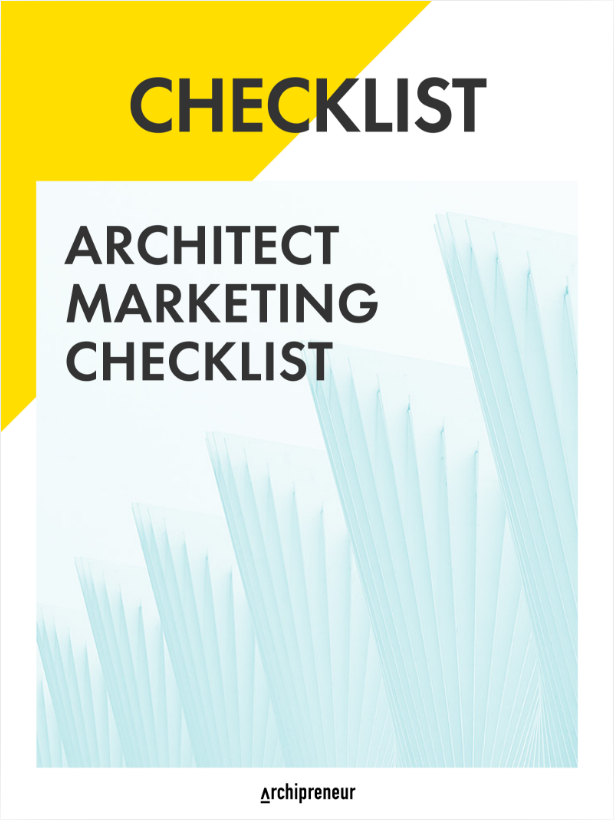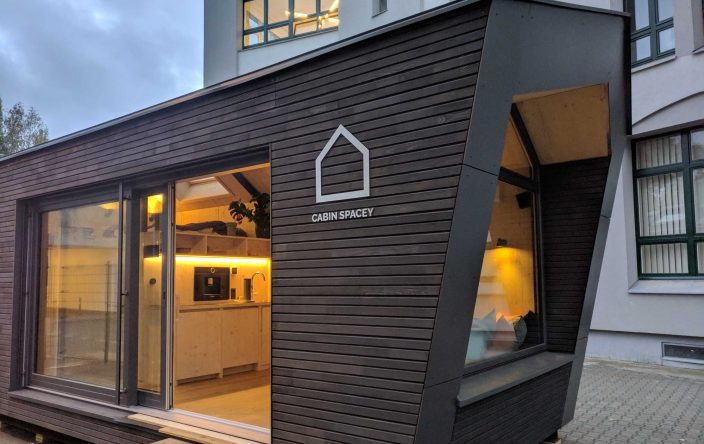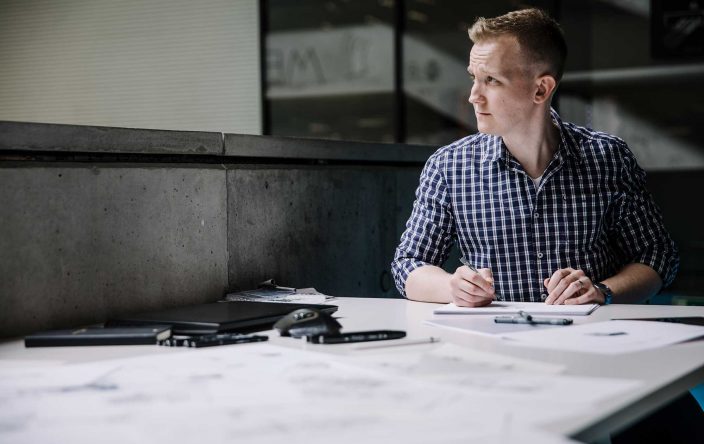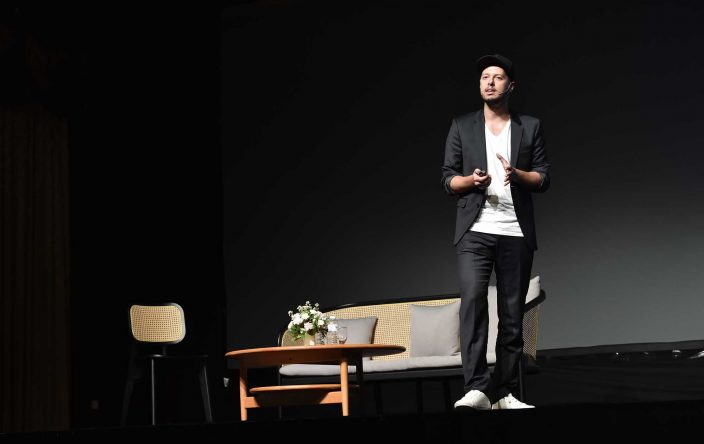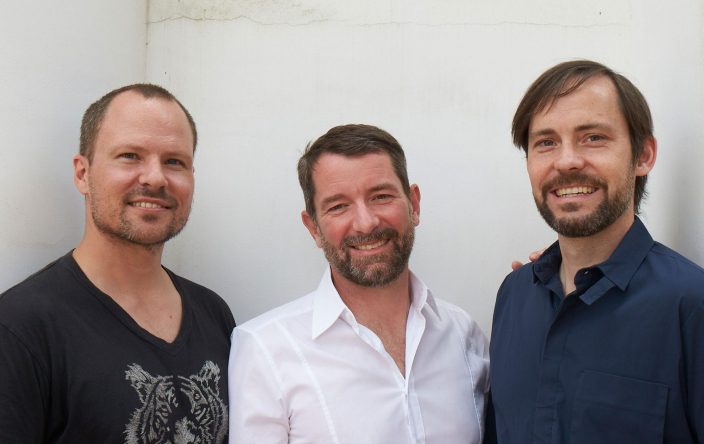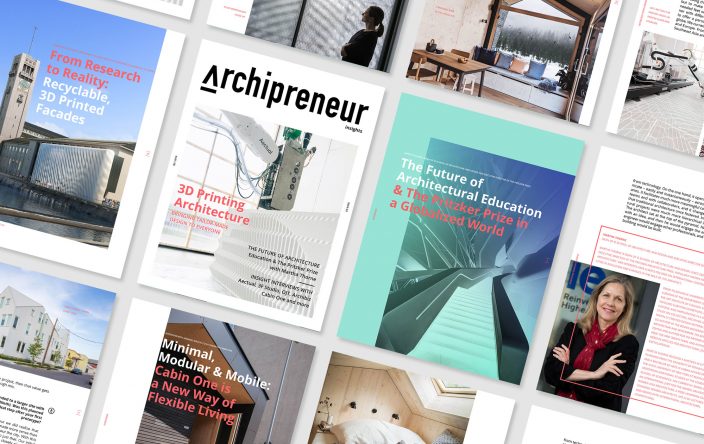
Work Smarter, Not Harder! How to Take Advantage of Technology in Architecture, with Michael Kilkelly from ArchSmarter
Do you want to get into the heads of the top initiators and performers in the field of architecture, building and development? If so, we heartily welcome you to “Archipreneur Insights”! In this interview series, we talk to the leaders and key players who have created outstanding work and projects. Get to know how they did it and learn how you could do the same for your own business and projects.
This week’s interview is with Michael Kilkelly, founder of ArchSmarter and Space Command.
Michael is an architect who did what we always extol on archipreneur: he took his experience in working as an architect at a number of international design firms, among others Gehry Partners in Los Angeles, and used that know-how to build his own businesses – not one but two! His niche also happens to be his passion: the intersection between design and technology.
In 2012, Michael founded Space Command, an architecture and consulting firm in Middletown, CT. Here, he brings his broad professional vision to more intimate projects.
Work smarter, not harder – this is the great slogan of Michael’s website ArchSmarter, founded in 2014. His goal is to help architects and designers work more productively by leveraging technology and so increase efficiency. The site provides high-quality content on productivity, software customization and product reviews.
Keep reading to learn more about the nerve-wracking but rewarding experience of launching a product, finding your voice in blogging, and Michael’s belief – that we share! – that architects should not accept long hours and low pay as a rite of passage.
I hope you enjoy the interview!
What made you decide to start your own architecture and consulting firm Space Command? Was there a particular moment that sealed the decision for you?
Like a lot of architects, I’ve wanted to start my own firm since I was in architecture school. At that time, I had a somewhat romantic notion of what it meant to be a business owner. I’ve since found out the reality is a lot grittier.
After school, I worked for a number of firms in the Boston area and then in Los Angeles. I was interested in trying out different types of work so I spent some time at a landscape architecture office and even an Internet startup in the last 90s. I always came back to architecture, though. I didn’t mind working for other firms. I was learning what it meant to be an architect and I would do competitions and side project in my spare time. That said, I still harbored that image of owning my own firm.
The turning point occurred in 2008 when I was working at Frank Gehry’s office in Los Angeles. The economic climate here in the US was starting to take a turn for the worse. I was working on a large project at the time – there were over 70 of us in the office working on this one project. All of the sudden, the client put the project on hold. It was a shock. We were in the middle of construction documents. There wasn’t enough other work in the office to support 70 people so we all knew layoffs were imminent.
I was fortunate and kept my job but I saw a lot of good, experienced friends and colleagues let go. It wasn’t the firm’s fault. Things were bad for the entire industry. But I realized over the course of that year, as more and more people were let go, that I wanted to be responsible for my own livelihood. Employment wasn’t guaranteed. I’d rather take my chances and build something on my own. This actually seemed like the less risky option.
I started devouring business books and learning more about sales and marketing. I never had any formal business training so I took in on myself to learn as much as I could. Josh Kaufman’s The Personal MBA was a great resource and fundamentally changed the way I thought about running my own firm.
In 2012, my wife got a job offer in New England. We had two kids at the time and were spending most of our vacations traveling back to Boston, where we’re both from. This seemed like a good opportunity. We’d be close to family and I could strike out on my own.
I had a great relationship with Gehry Partners and was able to continue on as a consultant. This has been really beneficial. I had consistent income through the consulting work while I built up Space Command and ArchSmarter. I still do work with them today, some four years later.
What made you then decide to start ArchSmarter? Could you tell us a little about your idea behind it?
I’ve always been interested in the intersection of architecture and technology. Throughout my career, I’ve consciously straddled the line between the two, whether it was working as a designer utilizing 3D in the design process or as a BIM manager implementing new tools and training. I even spent time doing R&D for an Internet startup focused on the construction industry.
While working in architecture firms, even highly technical firms like Gehry Partners, I was always struck by how averse some architects were to adopting technology. There was a mentality that “I’m an architect, I’m not a technical person”. In fact, many firms marginalized the more tech-savvy architects as ‘just’ BIM or CAD monkeys. Technology was seen as a necessary evil, not a way to create leverage.
The reality is that we as a profession are under a lot of pressure to produce more value for our clients. My goal at ArchSmarter is to help architects and designers work smarter, not harder by leveraging technology to increase efficiency and maximize effectiveness.
What is the business model for ArchSmarter?
The business model for ArchSmarter is evolving. I started ArchSmarter with an ‘audience first’ approach. I began blogging and wrote about topics that interested me. I wrote consistently for over a year and half before I launched my first product, a course on programming Revit. Since then, I’ve released another course and a series of Revit tools.
My main focus is to further develop my audience and figure out ways to best help them. My training and courses have been well received so I am focusing on this area and trying to build out a portfolio of courses that will help architects level up their technical skills.
Do you implement the ideas you present on ArchSmarter in your work for Space Command? Do you actually ‘work smarter’?
Yes, the two are very complementary. I develop tools and workflows through ArchSmarter that I put into practice with my design work for Space Command. I approach every project with an attitude toward working smarter.
Since I work alone and have a young family at home, I don’t really have a choice. I have to be efficient otherwise I won’t be home for dinner or make it to my kids’ soccer games.
Likewise, the challenges I face as a working architect inform what I write about and the tools I develop for ArchSmarter. Most of the Revit macros I’ve created for the ArchSmarter Toolbox have been to solve problems I’ve faced in my own work. Likewise, my “Excel for Architects” series came out of my own frustrations using Excel.
On ArchSmarter, you write about technology and design. Why is the combination of these two topics important to you?
I’ve long been interested in the intersection of design and technology. I see technology as a way to create greater leverage in our work. It’s a means to an end. Since every building is essentially a one-off creation, we can’t take advantage of economies of scale. As such, it’s crucial that we work as efficiently as possible.
We’re taught in school to work hard, but not necessarily to work smart. I’ve found this attitude carries over into our professional lives. As a result, many architects accept the long hours and low pay as a given. I believe we can reverse this trend by working smarter and better leveraging technology. In the end, we can provide greater value to our clients by designing better buildings faster and doing more with less.
You’ve just launched your first online course through ArchSmarter. What has the reaction to it been like?
Launching the first course was an interesting process. I’m new to the process and it’s been challenging, especially the marketing aspects. I did a lot of research but I still had to feel my way through it.
While I had built an audience prior to the launch, I wasn’t sure anyone would buy the course. Fortunately they did but it’s nerve wracking. You put a lot of time into something with no guarantee you’ll be compensated. That’s the major difference between creating products and doing client work. With client work, you get paid as you go. With products, it’s the opposite. You put the work in up front then (hopefully) get paid on the back end.
I’ve since launched two more products, one course and one software-related product. The course has been really successful but the software was a total dud. That’s just how it goes. I’m constantly learning what my audience needs and how I can best provide value.
I really enjoy the teaching component. I started hosting monthly webinars on a variety of topics. These have been very well received. I also have several more courses in the works.
Do you have further plans with ArchSmarter that you can tell us about?
As I mentioned above, I’m developing more courses and training. I really enjoy the process and see a need in the industry for advanced technology training beyond just learning how to use the latest software. We need to change our approach to how we use our tools and develop new methodologies that take advantage of technology.
I also plan to broaden the course offerings. I would like to include courses on marketing and soft skills as well as more technical topics like field observation and construction administration. I’m looking at bringing on some additional partners to help with this effort.
On a more immediate note, I’m launching a new version of the ArchSmarter website in the near future. It’s been two years since I first launched the site and it’s in need of an overhaul. I have a new identity for the site that I’m really excited about and a more user-friendly design for this site. I’m also developing a member section. I want ArchSmarter to evolve into more of a community where members can interact as well as access tools and training materials.
Do you think every architect should write a blog?
I think every architect should develop their voice and their viewpoint using whatever channel works for them. It could be a blog, or Twitter, or publishing videos. The important thing is to produce.
Blogging has been very rewarding for me. It could be because I’m an introvert – I like words. I’ve started posting more video content and I’m trying to develop more of a Twitter following but I’ve got a long way to go. For me, writing has been the best medium.
I’m a firm believer of the ‘find your passion’ mentality, as opposed to ‘follow your passion’. The best way to find your passion is by producing something on a consistent basis. After a year, you’ll have a considerable body of work as well as a better understand of what you really want to do.
Do you have any advice for “Archipreneurs” who are interested in starting their own business?
Learn to sell something, anything. You’ll never learn more about what it takes to run a business than when you put yourself out there and make an offering. Maybe someone will buy it. Hopefully lots of people will buy it. It’s a lot like design. It’s an iterative process. But you won’t get that real data and experience until you try. If you’re working full-time, start a side gig. Develop an audience and figure out a way to provide them with something useful.
How do you see the future of the architectural profession? In which areas (outside of traditional practice) can you see major opportunities for up and coming developers and architects?
We’re living in a data-centric world. We as a profession need to embrace this reality and develop our data fluency. I believe architects can provide a valuable service to their clients by helping them better understand their data as it relates to the physical environment.
In this capacity, the architect can leverage his or her spatial knowledge to provide insights that directly address the client’s particular challenges. Done right, this leads to a deeper relationship that goes far beyond the design and construction of a single building.
About Michael Kilkelly
Michael is an architect who operates at the intersection of design and technology. He is the founder of Space Command, a design and technology firm in Middletown, CT. He has extensive experience on diverse, large-scale projects including sporting arenas, residential towers and performance halls. Equally versed as a technologist, he has built numerous database and web applications as well as custom software to support the design process.
Michael is also the founder of ArchSmarter, a website dedicated to helping architects work smarter, not harder. His writing on design and technology appears regularly in ArchDaily and ARCHITECT magazine.
Prior to founding his firm in 2012, Michael worked for a number of internationally recognized design firms. As an associate at Gehry Partners in Los Angeles, Michael worked on the New York by Gehry residential tower, the Guggenheim Abu Dhabi Museum, and the Joyce Theater in New York City.
Michael received his Bachelor of Architecture from Norwich University in 1995 and his Master of Science in Design and Computation from MIT in 1999.
Join our Newsletter
Get our best content on Architecture, Creative Strategies and Business. Delivered each week for free.
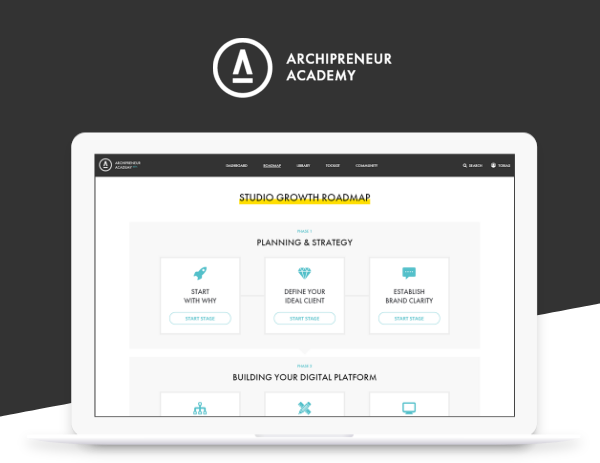
JOIN THE
ARCHIPRENEUR ACADEMY
- 9 Stage Studio Growth Roadmap
- Library of In-Depth Courses
- Checklists and Workbooks
- Quick Tips and Tutorials
- A Supportive Online Community

